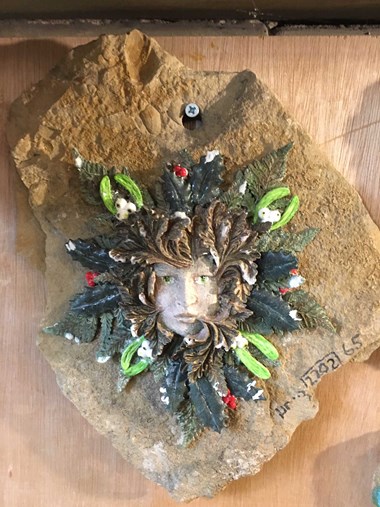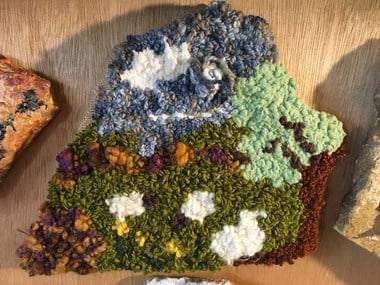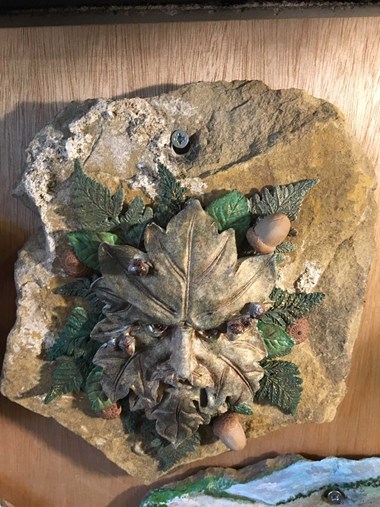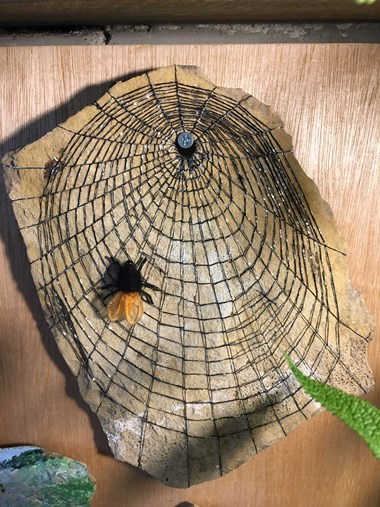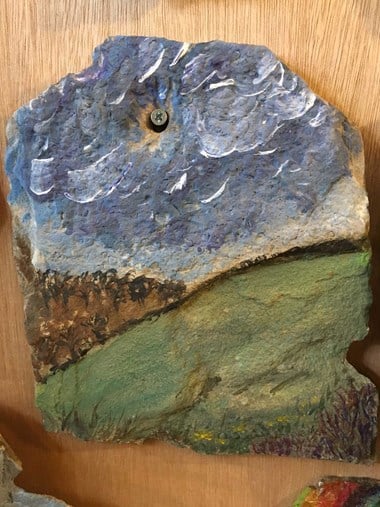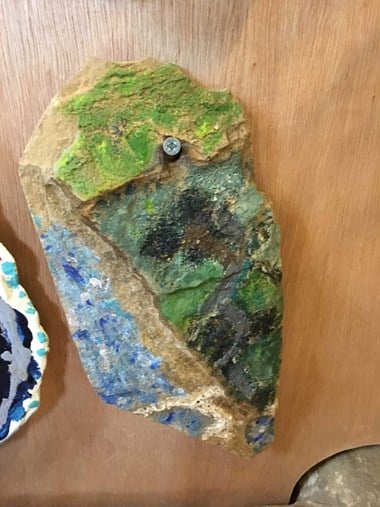Food for Thought: Community Involvement in a Research Strategy for the Yorkshire Wolds
In 2018 Historic England commissioned the York Archaeological Trust to carry out a project to help us explore the story of the Yorkshire Wolds and create a research strategy. Neil Redfern, former Historic England Principal Inspector- and now Executive Director of the Council for British Archaeology, shares his experience of the community input that formed an important part of this project.
What matters in the Yorkshire Wolds
As an archaeological landscape the Yorkshire Wolds is outstanding for its quality and richness, providing the means to understand how countless generations have lived and farmed the area over thousands of years.
What they have left behind are not just fantastic archaeological sites - Neolithic cursus monuments, Iron Age square barrows and chariot burials, Anglian cemeteries, and deserted medieval villages like Wharram percy, to name but a few – but also great estates, historic houses, model farms, designed gardens and parklands. The quality of these sites and places can compete with any in Britain for their impact and importance.
Few people outside the area know about the Wold’s wealth of archaeological monuments and historic landscapes
Curiously, despite more than a century of archaeological discoveries by local luminaries, national bodies and universities, few people outside the area know about the Wold’s wealth of archaeological monuments and historic landscapes , and fewer still visit them. The cultural heritage of the Wolds is relatively untapped and has yet to contribute its full potential to the tourism and rural economies of the area.
Driving along the tops of the Wolds, across the open landscapes beloved of David Hockney, you are confronted by a picture dominated by highly productive, quite featureless arable fields. But great linear earthworks, ancient churches and historic estates lie only slightly out of view in the valleys and underneath the wooded slopes. Many more highly significant archaeological sites are ploughed down and even harder to appreciate. These are now only visible to the informed eye as faint undulations or strange patterns in the ripening crops, best appreciated from the air.
Research frameworks and local communities
Historic England has long supported the development of regional and local research frameworks, designed to pool knowledge and define priorities for future archaeological investigation, whether by universities, commercial archaeological units or community groups.
The Yorkshire Wolds project has this aspect at its core, and it is currently gathering and analysing information in order to provide a robust model of our current understanding and key questions. But it is also testing new ideas. These include a focus on sample areas reflecting different aspects of settlement and land use across the Wolds, from the coastal peninsula at Flamborough to the great estates and larger settlements of the interior and southern fringe.
These areas lie at the heart of a broad conversation about the past and future of the Wolds involving not just those with an established interest, but anyone, local or visitor, drawn to ‘Food for Thought’ events, workshops, market-place stands and pop-up museums.
The Food for Thought project has as its aim the creation of a vision for the wider heritage of the Wolds, for the whole community as well as for the specialist archaeological sector. A number of innovative approaches have been adopted to create this vision and make it accessible to a range of audiences. This includes its development as one of a small number of pioneer online wiki systems which Historic England is currently helping to develop. These will make frameworks much more accessible and easy to find, allowing them to be managed and updated by their own research communities and thereby kept relevant and sustainable into the future.
'Food for thought': a new strategy for the Wolds
In developing the project we are trying to understand where best to focus activity and resources to develop the rich heritage of this unique landscape.
We also want this work to go beyond a discussion among experts.
We want it to be a much wider conversation about what we know and understand about the archaeology and heritage of the Wolds, and how this relates to the present-day population.
We want to know how we might collectively shape future investigation and reveal the stories locked up in the landscape and the lives of those who shaped it.
Through an open conversation we are seeking to understand what it means to those who live, work and visit this fascinating landscape. We want as many people as possible to be part of this discussion. We want to explore what people want to know about this landscape and how communities and specialists can work together to unlock its potential.
A common thread to the story of the Wolds is the production of food and its central role in shaping the appearance and identity of the Wolds. Hence the name ‘Food for Thought’: a link between populations past and present, between the lost arrowheads of early Neolithic hunters, the medieval sheep walks, the immense fields created since the 1970s, the resurgence of farmers’ markets and the artisan food fairs of the present day.
Inspirational archaeology and heritage
As part of this conversation the project held its first public meeting in June 2018. This is when I first came in contact with the work of the Thixendale Art Group and their work with the High Wolds Heritage Group at Hanging Grimston. One group had followed in the footsteps of the other. The High Wolds Group was busy partnering the Scarborough Archaeological and Historical Society in excavating a deserted medieval settlement on the western side of the Wolds overlooking the Vale of York. The Art Group, from an adjacent valley (many of whose members also participated in the dig), took inspiration from their discoveries to fuel their own visions of what the dig had revealed about the Wolds landscape and the lives lived within it.
What I saw and the conversations I subsequently had both inspired me and underpinned how I now talk about role and impact of archaeology, heritage and art, locally and nationally. To me archaeology is a process and not a thing or a product. The stuff in the ground is just stuff in the ground until we dig it up, give it a different value and call it ‘archaeology’. But who gives it that value, and how, is not be limited to archaeologists or heritage professionals.
In the children’s cartoon movie ‘Ratatouille’, award winning Chef Gusteau maintains that ‘anyone can cook’, but food critic Anton Ego pours scorn on this view. Until, that is, he is cooked a meal by Chef Remy - a rat! - leading him to the realisation that what Gusteau said was true, and furthermore that ‘whilst not everyone can become a great artist, a great artist might come from anywhere’.
To me this is a good analogy for archaeology and heritage. I would add my own perspective and interpretation:
Whilst not everyone might become a professional or expert archaeologist, anyone can participate in illuminating the past, help to define it, shape it and make it more meaningful and brilliant.
This is what the work of the art and heritage groups have done. Indeed carrying the analogy of the movie further, not only was the chef different but the food was too. Who did the cooking changed and so did the content of what was cooked. At Hanging Grimston the artists became the archaeologists and the archaeological product changed into something far more meaningful, creative and inspirational, in the process changing the perspectives of the professional archaeologists involved (including me).
There also seems to be a more fundamental shift in how we as heritage or archaeological experts operate. For me, heritage is a collaborative process that needs different ways of knowing and doing. Formal research-based knowledge is an important part, but only one part of the recipe to return once again to the cooking metaphor.
More than that, doing it collaboratively with people means heritage is different, richer, more dynamic, more sustainable and more widely relevant. That is what the work at Hanging Grimston and the art produced from it illustrates to me, and what we are trying to capture with our work on the Yorkshire Wolds. Heritage and archaeology are about inquisitiveness and curiosity, but also, crucially, about creativity – the passion to apply what we learn so that others might draw meaning and inspiration from it.
Acknowledgements
Thanks to Dave Went (Archaeological Investigations Manager, North), and Daniel Miles (Research Resources Adviser) for their advice in compiling this article.
Neil Redfern M.Phil
Executive Director at the Council for British Archaeology
Before taking up his new role at the Council for British Archaeology, Neil worked for Historic England in York for 18 Years and was latterly responsible for the delivery of Historic England’s statutory advice in Yorkshire. A graduate of the universities of Cambridge and Manchester, and has over 22 years’ experience of cultural heritage management, archaeological fieldwork, survey and assessment and museum practice working for English Heritage, the Cambridge Archaeological Unit, the Council for British Archaeology and the Wordsworth Trust. He is particularly interested in the practical and philosophical challenges of conservation and how we work with the wider communities to better understand how we articulate and discuss the meaning and values we all attach to places.
Yorkshire Wolds art
Art inspired by the heritage and landscape of the Yorkshire Wolds created by High Wolds Heritage Group and Thixendale Art Group.


